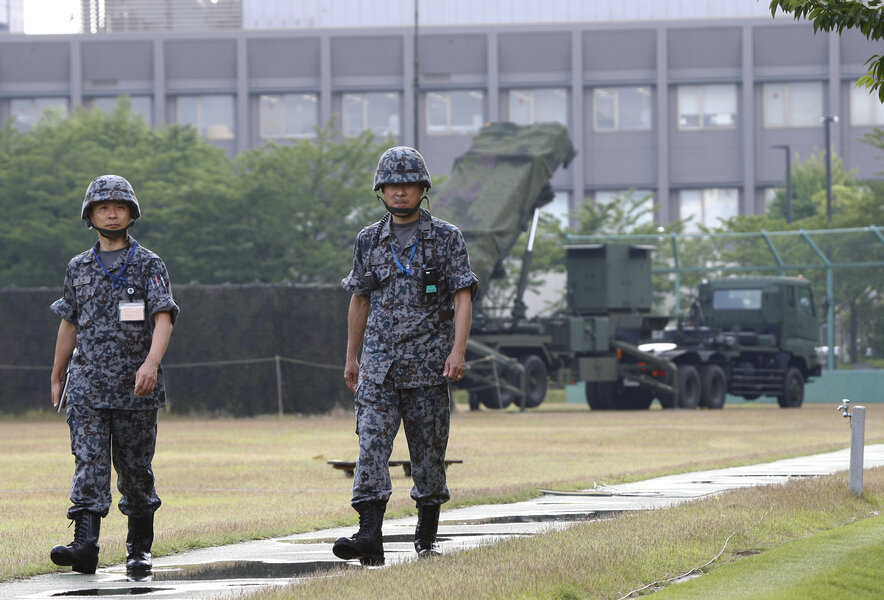Why is North Korea launching a spree of test missiles?
Loading...
In a remarkable show of persistence, North Korea on Wednesday fired two suspected powerful new Musudan midrange ballistic missiles, U.S. and South Korean military officials said, its fifth and sixth such attempts since April.
Five of those launches failed, many exploding in midair or crashing, and the sixth flew only about 400 kilometers (250 miles), South Korea's Joint Chiefs of Staff said, an improvement but still well short of the missile's potential 3,500-kilometer (2,180-mile) range and not long enough to be classified as intermediate.
Despite the repeated failures, the North's determination in testing the Musudan worries Washington and its allies, Tokyo and Seoul, because the missile's range puts much of Asia and the Pacific, including U.S. military bases there, within reach.
Each new test — apparently linked to a command from North Korean leader Kim Jong Un — also likely provides valuable insights to the North's scientists and military officials as they push toward their goal of a nuclear andmissile program that can threaten the U.S. mainland. Pyongyang earlier this year conducted a nuclear test, its fourth, and launched a long-range rocket that outsiders say was a cover for a test of banned missile technology.
A statement from South Korea's Joint Chiefs of Staff said a suspected first Musudan launch from the east coast city of Wonsan failed early Wednesday morning, but there were few other details.
Later Wednesday, the JCS said the North fired another suspected Musudan, which flew about 400 kilometers. Seoul didn't immediately classify this launch as either a success or failure, but the reported distance is well short of past tests of other midrange missiles.
A U.S. official also said the first launch appeared to be another failure, adding that the U.S. was assessing exactly what had happened. The official wasn't authorized to comment publicly and requested anonymity. Another American official said the first launch was a suspected Musudan but initial indications were that it failed in flight over the Sea of Japan, which the Koreas call the East Sea.
The U.S. Strategic Command in Hawaii said its systems detected and tracked two suspected North Korean Musudanmissiles that fell into the Sea of Japan. It said in a statement that they didn't pose a threat to North America.
In April, North Korea attempted unsuccessfully to launch three suspected Musudan missiles, but all exploded in midair or crashed, according to South Korean defense officials. Earlier this month, North Korea had another suspected Musudan failure, South Korean officials said.
Before April's launches, North Korea had never flight-tested a Musudan missile, although one was displayed during a military parade in 2010 in Pyongyang, its capital.
The launches appear to stem from Kim Jong Un's order in March for more nuclear and ballistic missile tests. The order was an apparent response to springtime U.S.-South Korean military drills, which North Korea views as an invasion rehearsal.
Since the end of those military drills, Pyongyang has repeatedly called for the resumption of talks with Seoul, even as it pursues new missile development, but the South has rejected the overtures. Seoul wants the North to first take steps toward nuclear disarmament. Pyongyang says its rivals must negotiate with it as an established nuclear power, something Washington and Seoul refuse to do.
The string of recent launch attempts shows the North is pushing hard to upgrade its missile capability in defiance of U.S.-led international pressure. The North was slapped with the strongest U.N. sanctions in two decades after its nuclear test and long-range rocket launch earlier this year.
"These provocations only serve to increase the international community's resolve to counter (North Korea's) prohibited activities, including through implementing existing U.N. Security Council sanctions," State Department spokesman John Kirby said in a statement. "We intend to raise our concerns at the U.N. to bolster international resolve in holding (North Korea) accountable for these provocative actions."
North Korea has recently claimed a series of breakthroughs in its push to build a long-range nuclear missile that can strike the American mainland. But South Korean officials have said the North doesn't yet possess such a weapon.
The North, however, has already deployed a variety of missiles that can reach most targets in South Korea and Japan, including American military bases in the countries.
The Korean Peninsula remains in a technical state of war because the 1950-53 Korean War ended with an armistice, not a peace treaty. About 28,500 U.S. soldiers are stationed in South Korea to deter possible aggression fromNorth Korea; tens of thousands more are stationed in Japan.







